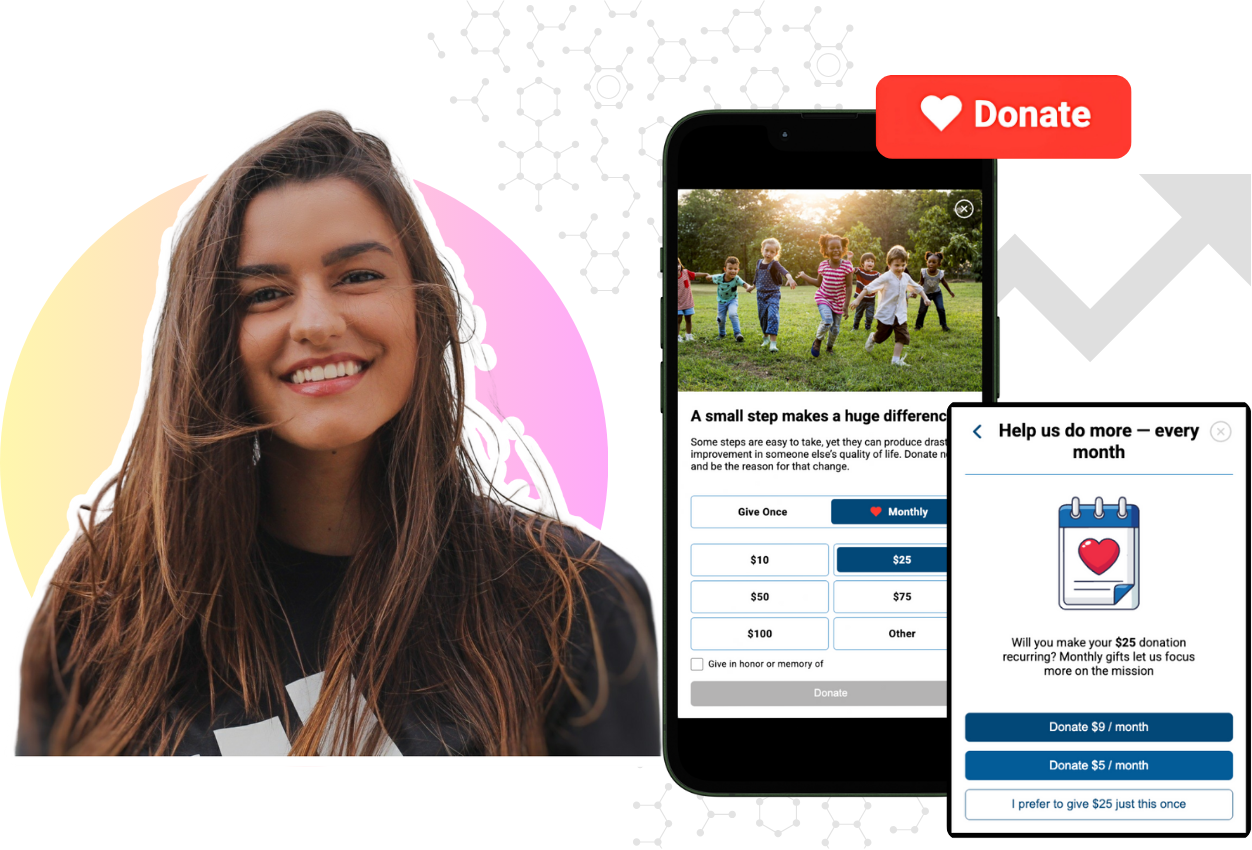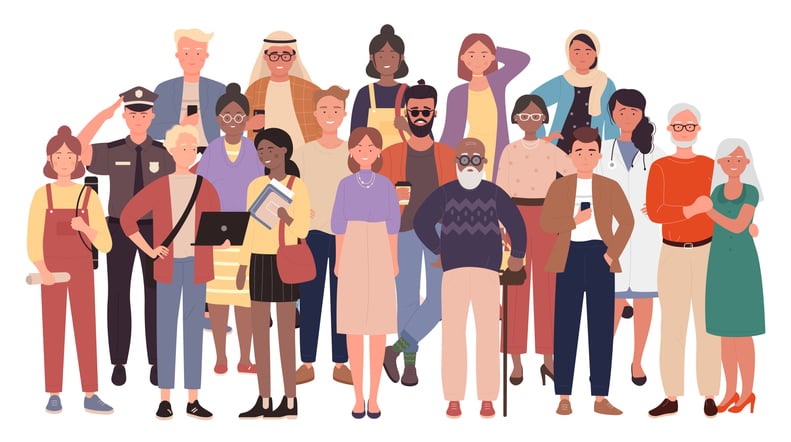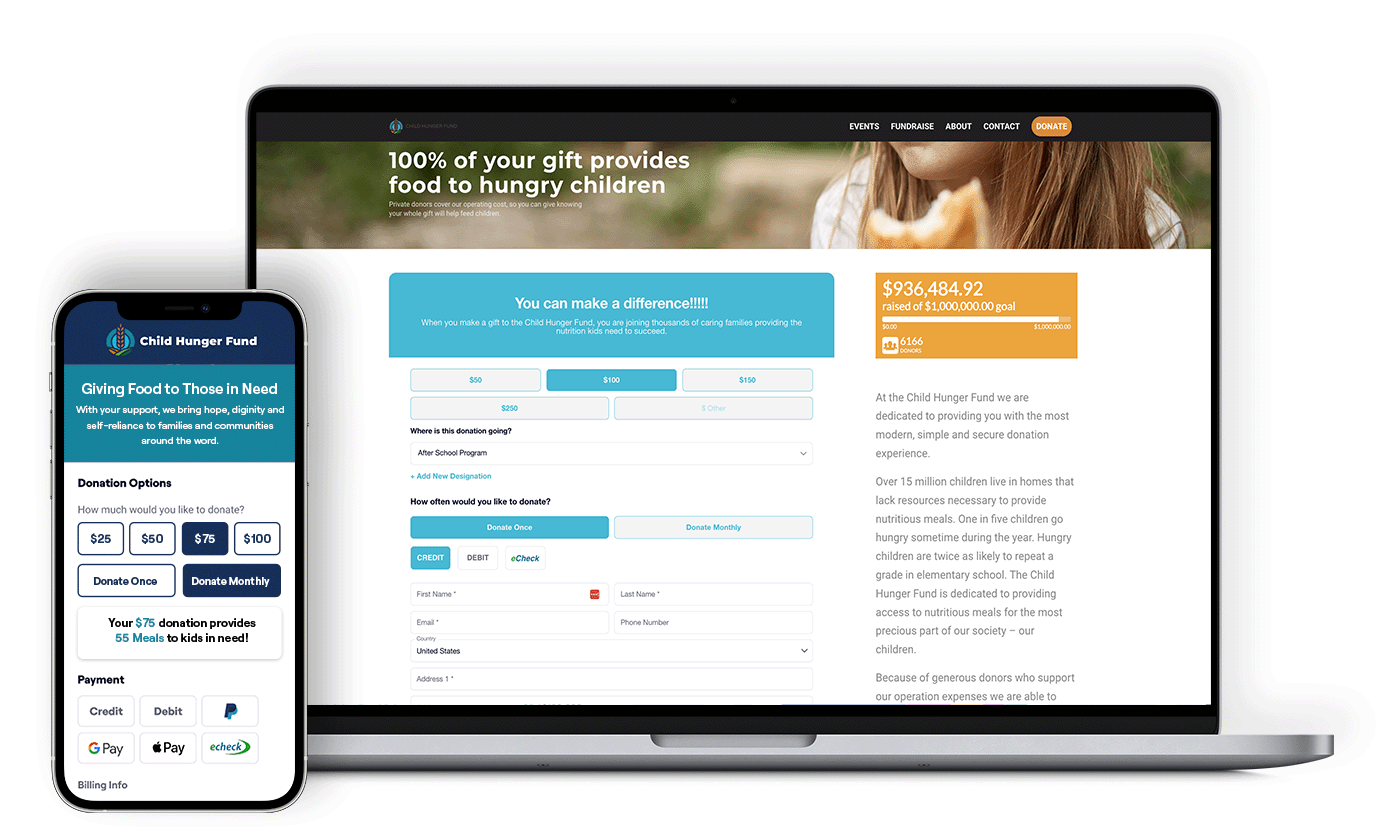7 Ways the Next Generation of Giving Will Look Dramatically Different
The challenges today’s nonprofit leaders face are well documented — from the persistent hurdles to acquiring new donors to issues ofretention....

Mobile-First Pop-Up Donation Form
Launch mobile-first pop-up forms in minutes, use built-in tools to capture more donations, and optimize the giving experience—no dev team required.
New to online donation pages for your nonprofit? Start here.
Donation page A/B testing - no science degree needed.
Keep your donation page loading fast - and drive higher conversions.

The 4 Types of Online Donation Experiences
89% of donors leave without giving. Learn how to use the right donation form to close the gap and boost conversions.

Every generation of people has a story. Each age group has lived through many different and same events. Whatever those are, they all come away with their own perspective. It’s through these circumstances and experiences that shape who they are and their actions. Charitable giving is one of them.
For nonprofits to increase their overall revenue, they simply want to raise as much money as possible. Whether it be through a giving form, peer-to-peer page, event, or sending out flyers through the mail, fundraising is – and should be – a nonstop process. Digging deeper into which generation might respond more to a certain donation ask may not be a part of the plan for some, but there are numbers to say understanding charitable giving by generation is a bigger deal than you might think.
Let’s look at how each generation performs in charitable giving, and what nonprofits should be focusing on in the future of generational giving.
To start, let’s define the ages of each generation. While the specific years are slightly debated and different names are used for some, the five generations most common in charitable giving today include Matures, also called the Silent Generation or Traditionalists (born before 1946), Baby Boomers (1946-1964), Gen X (1965-1980), Millennials, or Gen Y (1981-1995), and Gen Z, or Post-Millennials (after 1995).
The award for the generation that gives the most goes to Matures. According to one study, 88% of those in the Mature generation give to charity, with an average annual gift amount of just under $1,400.1 While this generation accounts for only 19 million people in the US,2 they still give to the greatest number of charities per person (6).1
Runner-up goes the Baby Boomer generation. With a US population of over 70 million,2 72% give to charity.1 Their average annual gift amount isn’t as high as the Matures, but is close at $1,212.1 Also similar to the Matures are the type of charities they may support. Both are more likely to support their local places of worship and social services.
Next up is Generation X. The US population of Gen Xers is actually lower than the Baby Boomers (65 million),2 but more than half still find a way to donate to charity. The study shows that 59% of those in Gen X give to charity with an average gift amount of $732 per year.1
Millennials may not give as much, but they are the generation with the highest population in the US at 72 million.2 It’s because of this that their potential for charitable giving should not be ignored (more on that in a bit). The same study shows that 60% of Millennials have given to charity, but donate a much lower amount at $481 annually.1
The youngest and lowest-giving generation on the list is Generation Z. These teenagers and young adults give $341/year on average, and 44% of all Gen Zers donate to charity.3 With a US population of 68 million,2 this is a generation that hasn't started working yet or is just now graduating from college and entering the workforce, so they many not be financially set up to start giving to charity just yet, but will be soon.
It’s widely agreed that giving to charity is important. The amount of giving, both time and money, whom to give to, and the reasons for giving are up to each individual. As you read above, every generation gives differently. It can be simplified where from oldest to youngest, giving decreases. But why is that? Everyone is living through the same time and events, so why isn't giving the same across the board?
Because of these differences in giving, we need to understand the reasons why each generation gives what it does. Matures lived through a vastly different period. They were born before or during World War II and began living through the economic boom in the 1950s. By the time some were adults, the Vietnam War came around and many felt the need to serve. Even as the war was ongoing, Baby Boomers were born into economic growth, but saw their early adult life stalled by a recession in the 70s.
Gen X is where we started to see a shift in how people view the economy and work-life balance. Technology began to increase during this time, and soon flooded the workplace and social activities alike during the late 80s and 90s when the Millennials were born. This has continued with Gen Z in an even-further technologically connected world.
In these distinctive lifetimes, the interactions and viewpoints vary wildly. Matures were part of a time of war so giving whatever they had was important. Baby Boomers are similar in their view on hard work, but many may not have been able to give as much because of the recession. After many years of war and changing economic conditions, Gen X saw a different way to take care of themselves. That thought has now expanded with Millennials and Gen Z living and working through altering degrees of foreign affairs and recessions and inflations.
Basically, Matures give more because that is the life they were taught, and Millennials give less because they are more selective of the cause, rather than the specific charity. It's not just about monetary donations, either. Noncash donations are lower among Millennials than it is for other generations.
Knowing this, it now gives way to thinking about the future of generational giving and why it is so important.
As technology connects us even more and a change in how people work already happening, Millennials and Gen Z are the future for charitable giving. These generations make up almost half of the total US population combined, and have started or already have been working in their chosen career for a few years. Economic factors, international events, and societal shifts have changed the way these generations think about their money and the causes they should give to.
Through a decade-long study done by The Millennial Impact Report, researchers found that 90% of Millennials would stop giving if they lost trust in an organization, and that same amount are motivated to give by a cause or mission, not because of any specific organization.4 That percentage is backed by giving during the pandemic, where nearly 75% of Millennials donated money to help their family, friends, or a nonprofit during the first several months of 2020.5 Second on the list was Gen Z at 66%.
In a world where giving online is growing and will continue to stay, it is essential to know about who the future of giving will be. Of those in Gen Z, 98% own a smartphone6 and 93% of Millennials do the same.7 That online usage is clear in where both generations find information on causes and organizations. Nearly 60% of both gather info from a Google search, while 48% of Gen Z and 41% of Millennials use social media as their preferred destination; the next closest to use social media as their source is Gen X at 22%.3
It’s these generations that are already online, will continue to be online, and will ultimately have the largest say where donation dollars end up. As long as nonprofits strengthen and optimize their online presence and further their transparency and results-oriented actions and stories, the future of charitable giving should be in the right hands.
1 Generations.com: Four Generations For Charity: Who Really Gives a Buck?
2 Statista: Resident population in the United States in 2021, by generation
3 Blackbaud Institute: Next Generation of Giving
4 The Millennial Impact Report: Understanding How Millennials Engage With Causes and Social Issues
5 CNBC: Nearly 3 out of 4 millennials have donated money during the pandemic
6 Review 42: Gen Z Statistics – What We Know About the New Generation

The challenges today’s nonprofit leaders face are well documented — from the persistent hurdles to acquiring new donors to issues ofretention....

The calendar has turned over another year, and that means new opportunities for giving and building relationships with your donors.

Giving forms play a crucial role in facilitating donations and philanthropic endeavors. They serve as the bridge between individuals who wish to...